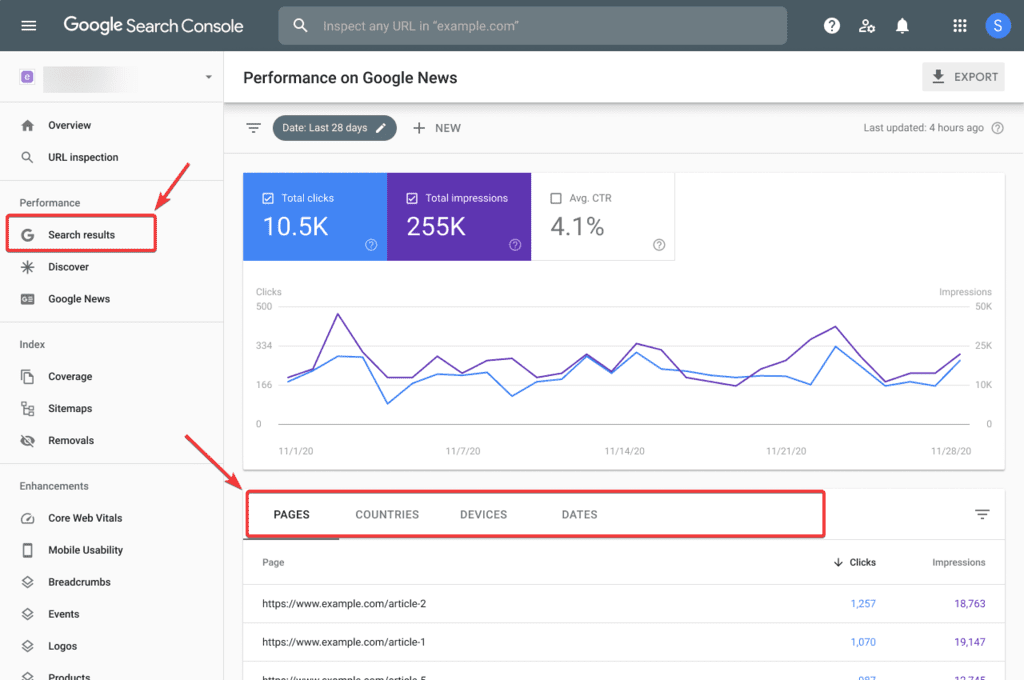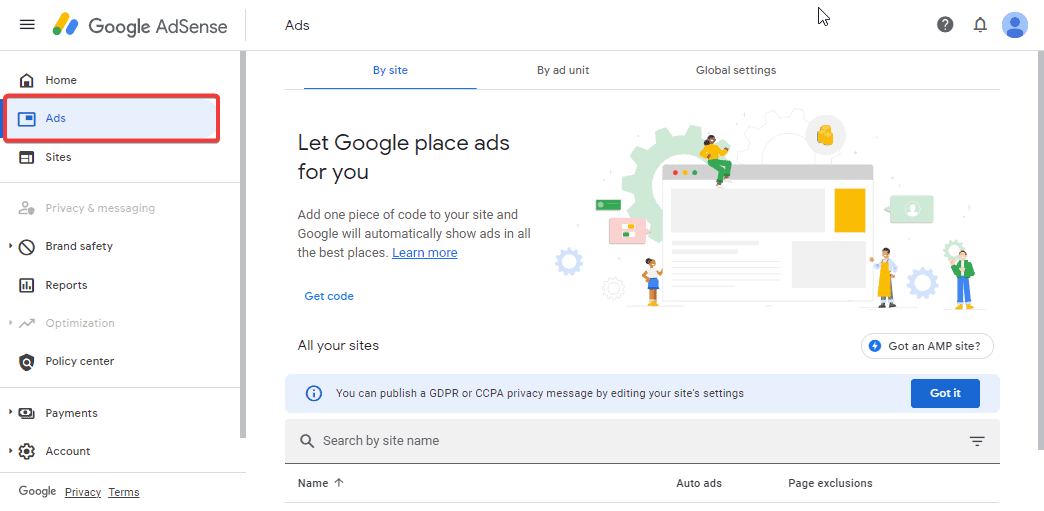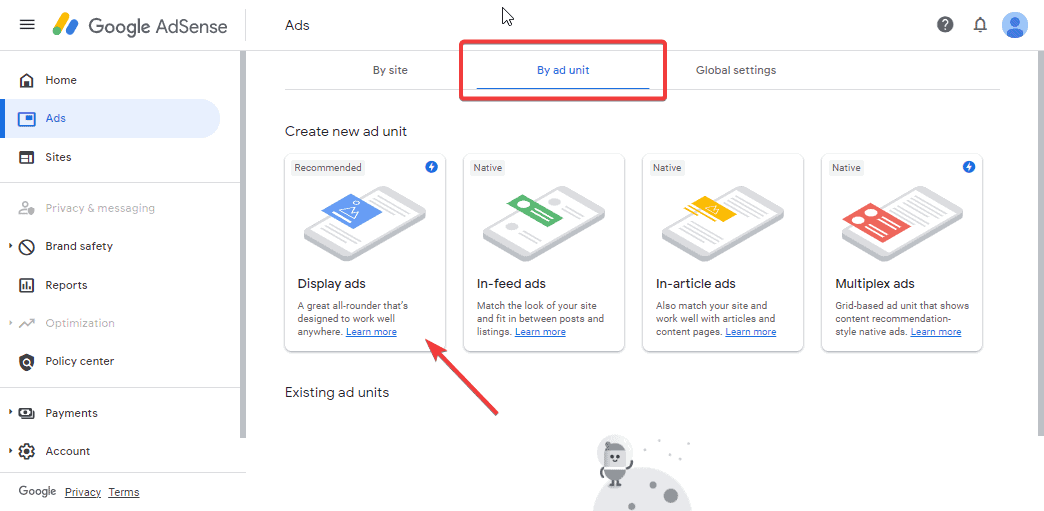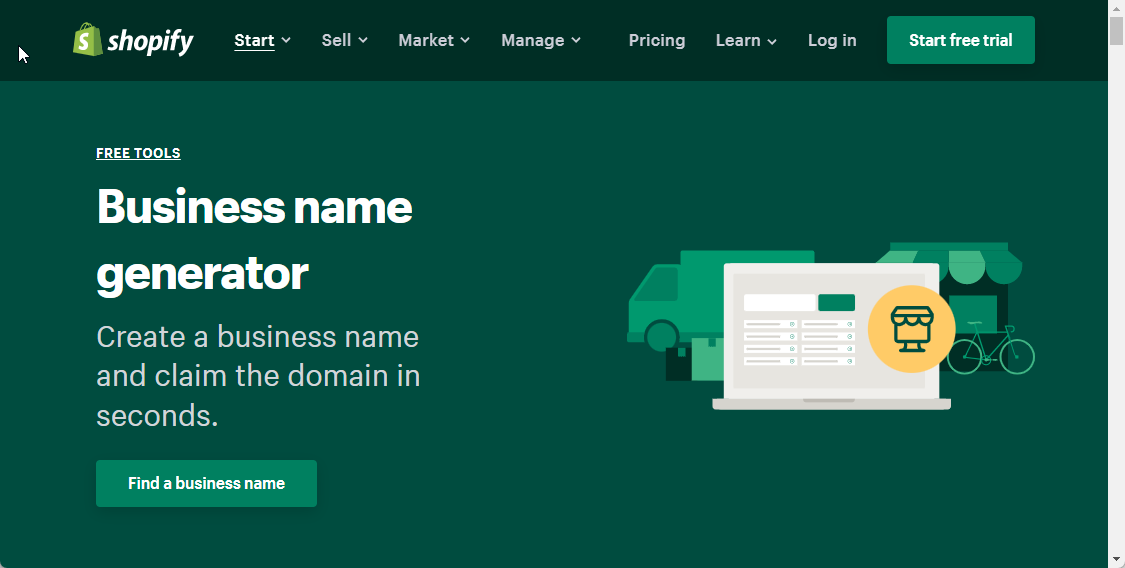Google Adsense is the largest advertising network used by millions of publishers worldwide.
And it’s one of the best ways to monetize a blog.
You can earn a sustainable income from Google Adsense to live your dream life.
But this won’t happen out of hope.
You need to know how to optimize Google Adsense.
And what’s Adsense optimization?
It’s simply the process of improving the quality of your content, generating relevant traffic, bettering user experience, and thus the performance of your Ads.
- Frequently Asked Questions
- What You’ll Need To Optimize Google Adsense
- How to Optimize Google Adsense: 5 Ways to Boost Your Adsense Revenue
- Create High Quality, Unique, and Relevant Content
- Leverage Responsive Design and Responsive Ads
- Avoid Too Many Ads Above the Fold
- Use Targeted and Contextual Ads to Get More Clicks
- Increase Dwell Time with Contextual Linking
- Experiment with Different Ad Types
- More Helpful Google Adsense Tutorial:
- Wrapping Up
Frequently Asked Questions
Which Adsense Ads Pay the most?
The type of Adsense Ads that pay varies depending on niches.
In some, publishers see the highest click-through rate with native in-article ads.
But generally, display ads often outperform every other ad unit.
Experimenting with different ad types, sizes and placements can help you find Adsense ads that pay the most.
Can I optimize Google Adsense For Higher Revenue?
Of course.
Optimizing Google Adsense the right way is directly proportional to higher revenue.
You’ll make more money if you get more eyeballs on your ads.
It starts with publishing top-notch content that matches audience search intent.
This and other Adsense optimization tips are what you’ll learn in this post.
What You’ll Need To Optimize Google Adsense
- A Google Account: You can’t use Google Adsense without a Google Account. Create a Google email account here.
- A Google Adsense Account: If you are already an Adsense user, make sure you can access your account.
- A Google Search Console Account: You’ll need Google Search Console to find topic ideas for your blog. We’ll show you how.
- SEO Tools: You can use many SEO tools to generate Keywords that your site can rank for. SEMrush, Ahrefs, and Ubersuggest are some of the most popular options.
- WordPress Admin Access You’ll need Admin access if your website uses WordPress CMS (Content Management System).
How to Optimize Google Adsense: 5 Ways to Boost Your Adsense Revenue
- Create High Quality, Unique, and Relevant Content
- Leverage Responsive Design and Responsive Ads
- Avoid Too Many Ads Above-the-Fold
- Use Targeted and Contextual Ads to Get More Clicks
- Increase Dwell Time with Contextual Linking.
- Experiment with Different Ad Types
Create High Quality, Unique, and Relevant Content
With Google, everything starts with valuable content.
And to optimize your Google Adsense earnings, content is king.
Google forever favors websites with high-quality content in search results.
So the more valuable your content is, the higher your site ranks on SERPs, which automatically translates to more eyeballs on your ads.
When you can generate high traffic, your chances of getting clicks drastically improve, and your website attracts more and more advertisers.
And what are great contents, by the way?
They are typically content that matches users’ search intent and answers their questions comprehensively yet ticks the boxes of all SEO best practices.
Finding content ideas that will resonate with your target audience requires research, keywords, and audience research in particular.
While there are.many SEO tools you can use, Google Search Console is a great place to start.
To use Google Search Console, log in to your Search Console account and go to Search results.
Look at Queries, Pages, and Countries.

You’ll see keywords that are already driving traffic to your site and your top-performing content.
From there, you can take cues to create more relevant content that will meet your audience’s needs.
You can learn more here about keyword research.
Leverage Responsive Design and Responsive Ads
One area most publishers overlook is the responsiveness of their ads.
Nearly 60% of all internet traffic comes from mobile devices.
Search crawler loves and favors responsive websites, and it’s now a ranking factor.
Responsiveness also gives a good user experience and more dwell time.
Ads that adapt to different screen sizes get higher click-through rates than non-responsive ones.
So if your website and your ads are not responsive, the odds are all against you.
To optimize Adsense earnings, you have to get responsiveness right for both.
Here’s how to quickly create responsive ads in Google Adsense.
Log in to your Adsense dashboard and select Ads from the left menu.

Switch to the by Ad unit tab and select Display Ads from the options.

Under Ad size on the left panel, select Responsive.

Complete the steps by inputting the text and images of the ad.
Do this for every display ad unit you create.
Avoid Too Many Ads Above the Fold
Above the fold is the part of your website your visitors see without scrolling.
While it’s a good practice to put Ads on prominent parts of your site, remember your visitors are there for the content, not the ads.
Shoving ads up their throat will only hurt your Adsense ads optimization goal.
Users will leave because of the bad user experience.
One or two ads above the fold are best.
And if you can avoid it altogether, the better.
You still have the sidebar and the in-content placement.
Moreso, Google now penalizes websites that clutter the space above the field in their website with too many Ads.
According to Google page layout algorithm improvement,
“This new algorithm improvement only impacts sites where there’s only a small amount of visible content above the fold or relevant content, is persistently pushed down.”
This algorithm change does not affect publishers who place ads above the fold to a normal degree.”
You don’t want to be in Google’s black book.
So one or two ads at most above the fold will improve your website usability and consequently boost your Adsense revenue.
Use Targeted and Contextual Ads to Get More Clicks
There’s no crime in showing all sorts of ads on your site.
Google has nothing against it.
But to optimize Adsense, you have to think audience first.
There’s no point in showing ads your visitors won’t click.
You don’t display mortgage financing ads on a marketing blog.
More often than not, it’s a waste of ad space.
Always opt for targeted ads that are in harmony with the interest of your visitors and your niche.
Before placing Ads, ask yourself;
With the type of content that interests your audience, what ads can attract their clicks?
Find your answers and put those ads in front of them.
Nothing beats ads that are relevant to the context of your content.
One advantage of niche-specific ads is that you can position them like CTAs (Call-to-Actions).
After your visitors read your content and are thinking about what to do next, your ad comes in here, and it’s destined to get their clicks.
Increase Dwell Time with Contextual Linking
You want to keep visitors on your website as long as possible so that they can see more and more of your ads.
Creating high-quality content with lots of contextual links is the way.
Google uses dwell time, i.e., the duration of visits to your site, to determine the quality of your content.
Besides elevating your rank on SERP, contextual linking improves user experience.
Your job here is simple.
Make sure that every piece of content on your website contains links to other relevant content such that when visitors arrive on your site, they’d see plenty of doors that lead to other closely-related topics of interest.
As they dig into your site deeper to know and learn more, your ads get more impressions and a high chance of getting clicked.
Also, use your website sidebar to display your relevant, popular, latest content that your audience might be curious to check out.
Experiment with Different Ad Types
There’s nothing wrong with following ad placement best practices, at least at the start.
But the reality is that in marketing, nothing is permanent.
What works for Mr. A might not for Mr. B.
To optimize your Adsense ads, you need to experiment and find out what ad configuration will boost your Adsense revenue.
You can A/B test text-only ads versus text and image ads to see how they perform.
Also, you can experiment with different ad sizes, colors, backgrounds,s and placements to see the variation in clicks.
Experimenting with different ad units and types is easy in Google Adsense.
You only need to create multiple variations of a single Ad unit, deploy the Ads, monitor their performance, and choose the one that promises the highest Adsense revenue.
That’s it.
More Helpful Google Adsense Tutorial:
- How to Apply for Google AdSense: Want to kickstart your Google Adsense journey? Learn how to apply for a Google Adsense account and how to get Adsense approval.
- How to Add Google AdSense to WordPress: This comprehensive guide explains how to add Google Adsense to your WordPress website and display ads in no time.
- How to Avoid Getting Click-Bombed On Google AdSense: Learn how to stop click-bombing on your site. You can keep click bombers at bay by using the methods in this guide.
Wrapping Up
When your ads are optimized for your content and your design is responsive, your audience sees the most relevant ads for their intent, irrespective of their device.
That’s how to optimize Google Adsense.
Now you see there’s no rocket science in Adsense optimization.
Use the tips above, and never forget to experiment.
Your Adsense revenue will earn a boost.
Act now.
Do you find this post helpful?
We’d like to hear your thoughts in the comments section below.




